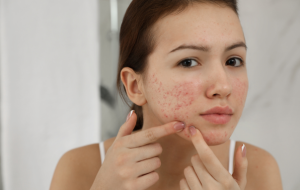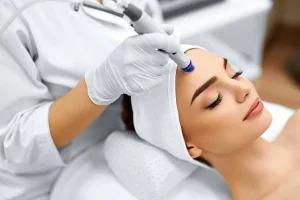Hair loss is a common concern affecting millions of men and women worldwide. Thinning of hair can be a natural part of aging. But, excessive hair loss can hurt self-esteem and confidence.
Most hair treatments address hair thinning by increasing hair density. There are some treatments that focus on strengthening existing hair to prevent future loss. Advancements in medical aesthetics offer potential solutions for both conditions, like Platelet-Rich Plasma (PRP) therapy.
In this blog we’ll take a look at the science behind PRP. We’ll also explore its effectiveness for hair loss and the treatment process.
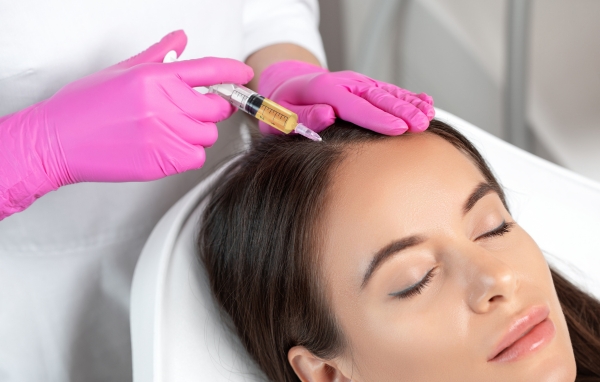
What is PRP?
The bone marrow produces platelets in the sponge-like tissue inside bones. The bone marrow contains stem cells that develop into red blood cells, white blood cells, and platelets.
This triggers clotting to stop bleeding, and starts tissue repair by releasing growth factors. Researchers theorized that concentrating platelets and injecting them into damaged areas could speed regrowth. It could also improve it.
To make PRP, a healthcare professional draws a blood sample, and spins it a high speeds in a centrifuge. This process separates the blood’s components, allowing for the extraction of platelet-rich plasma.
The extracted solution is rich in growth factors and proteins, and stimulates cell growth, promoting tissue repair. Applying the same process is an effective treatment for hair loss.
Weak or damaged hair follicles cause hair loss. An effective plasma rich platelet therapy for hair loss aims to stimulate regrowth by revitalizing these follicles.
Beyond hair restoration, PRP therapy has gained popularity in treating various musculoskeletal conditions too. PRP therapy helps treat injuries to tendons, muscles, and ligaments. These injuries are common in sports or due to wear and tear.

Is PRP Effective for Hair Loss?
Extensive research into platelet rich plasma (PRP) therapy for hair loss shows immense promise. The treatment is still under investigation. Most studies show that PRP therapy promotes hair growth. But, we need more research data to make it a standard treatment.
Here’s a glimpse into some key studies:
- A 2019 review in Aesthetic Plastic Surgery analyzed 11 studies. The studies had 262 participants with androgenetic alopecia (common hereditary hair loss). Most studies reported positive outcomes.
Platelet rich plasma injection therapy for hair loss reduced hair fall, increased hair width, and promoted denser hair growth. But, limitations like small sample sizes and inconsistencies in research methodology were acknowledged.
- Another 2019 review, in Dermatologic Surgery, looked at 19 studies. The studies had 460 participants. This review also said that PRP treatments led to hair regrowth. They worked for people with androgenetic alopecia and alopecia areata (patchy hair loss).
A key takeaway from these reviews is the lack of standardization in PRP treatment. Researchers and clinics use different PRP preparations, treatment intervals and injection techniques. This leads to variations in results. Without a universally accepted protocol, definitively confirming PRP’s overall effectiveness remains challenging.
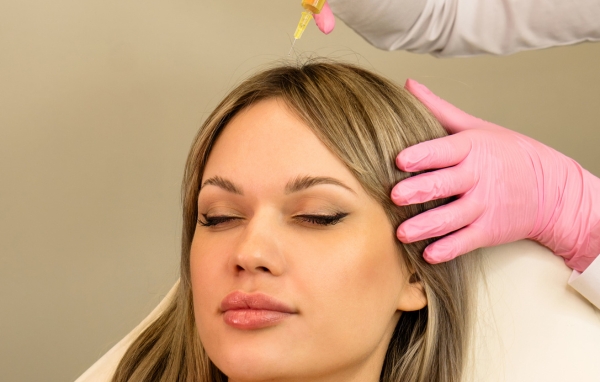
The PRP Procedure
Here’s a breakdown of a typical PRP hair loss treatment:
- Blood Draw: A medical professional draws a blood sample from a vein in your arm.
- Centrifugation: Centrifugation separates blood. A technician places the sample in a centrifuge and spins it at high speed. This concentrates its components and the platelets in the plasma.
- Platelet Extraction: The concentrated platelets are extracted using a syringe.
- Injection: The doctor numbs your scalp with an anesthetic. Then, they inject the platelets into targeted areas of your scalp.
The whole process takes about an hour. You may need several sessions spread out over time for the best results. After treatment, you can usually resume your regular activities with minimal limitations.
How Long Does PRP Last?
PRP is not a permanent cure for hair loss. To keep hair regrowth, you’ll likely need many treatment sessions spaced out over time. This is like common medications for androgenetic alopecia. These include topical minoxidil and oral finasteride.
The frequency of PRP sessions will depend on you. It will depend on your situation and the initial treatment’s effectiveness. Your doctor may recommend maintenance injections. You will get them every 3-6 months once hair loss is under control.
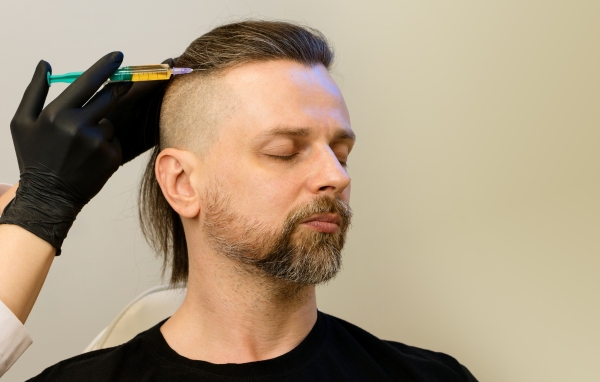
Who is a Good Candidate for PRP?
PRP therapy does not treat all types of hair loss. PRP is effective for mild to moderate hair loss due to androgenetic alopecia (male pattern baldness) or alopecia areata. It’s not ideal for people with very advanced hair loss. They should also avoid it if they have completely bald scalps.
Consult a qualified healthcare professional to determine if PRP is right for you. They can assess your scalp health, and understand your hair loss pattern and medical history. Based on the results they will decide if you are suitable.
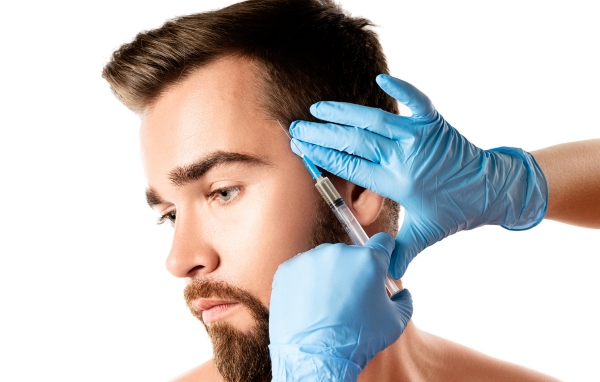
What are the Advantages of PRP?
- Minimally Invasive: PRP is minimally invasive. It has minimal downtime, unlike surgical hair transplantation.
- Natural Approach: This approach uses your own blood. It has a lower risk of allergic reactions than synthetic substances.
- Potential for Hair Growth: PRP may help hair grow. Studies suggest it can: increase hair thickness and improve scalp health.
- Faster Healing: PRP may speed up wound healing after the injection procedure.
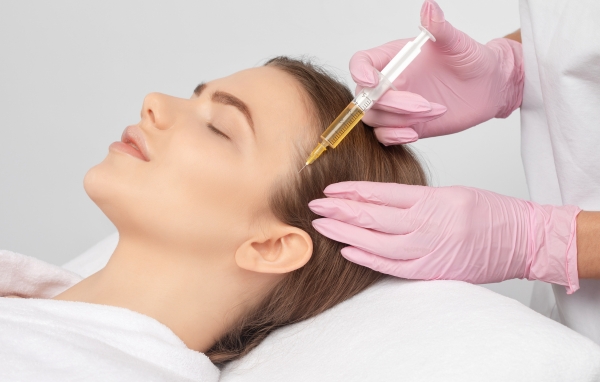
Factors to Consider for PRP Hair Loss Treatment
PRP offers a promising approach to hair loss. But, here are more factors to consider before deciding:
Cost of Platelet-Rich Plasma Therapy for Hair Loss
Insurance does not cover PRP therapy and hence it can be a significant investment. The cost can vary depending on location, the doctor’s experience, and the number of sessions needed. Ask about pricing up front. Also, budget for future maintenance.
Suitability
Not everyone is a suitable candidate for PRP, even though it is safe. But, it’s important to ask a doctor if it matches your medical history and hair loss cause. For instance, PRP might not be as effective for severe hair loss or for certain medical conditions.
Realistic Expectations
PRP is not a miracle cure. It can take months to see results. You may need ongoing sessions to keep hair growing. It’s crucial to have realistic expectations about the timeline and potential outcomes.
Finding a Qualified Provider
Finding a Qualified Provider is vital. Choose a board-certified dermatologist or trichologist. They should have experience in PRP hair loss treatments.
Look for a provider with a proven track record and good patient reviews. Ask about their experience with PRP. Ask about the specific technique they use and the results you can expect.
Conclusion
Losing hair can be frustrating. But, advances in medical aesthetics offer options for regrowth and better hair health. PRP therapy offers a hopeful, minimally invasive approach.
Remember, early diagnosis and intervention are key to achieving the best results. Schedule a meeting with a dermatologist or trichologist. Discuss your hair loss concerns with them.
Explore the best treatment plan for your needs. They can guide you through the options. They can weigh the pros and cons. They can help you achieve your hair goals.
After all, at Beauty Aesthetics, we believe everyone deserves to feel confident. They should embrace their natural beauty, inside and out. Contact us to understand if PRP treatment for hair loss is ideal for you.

